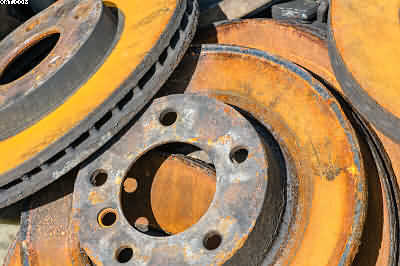Audi TT Hand-Brake failure
Table of Contents
Audi TT Hand-Brake failure

Audi TT Hand-Brake Failure
Q: What is the importance of checking my car’s brakes on a frequent basis?
A: Regular brake inspections are critical for safety. They ensure that your brakes are operating properly, which is critical for stopping your car quickly and safely, particularly in emergency situations.
Q: What are the symptoms that my brakes need to be checked?
A: Unusual noises like screaming or grinding, a spongy or soft brake pedal, the car pulling to one side when braking, or the brake warning light turning on are all signs that your brakes need to be serviced.
Q: How often should I get my brakes checked?
A: It is advised that you check your brakes at least once a year. However, if you observe any problems or if your driving habits include numerous stops, more frequent inspections may be required.
Q: What happens during a brake check?
A brake check normally entails assessing the brake pads, brake discs, and shoes for wear, testing the brake fluid level and quality, and verifying that the complete braking system, including pipes and hoses, is in excellent working order.
Q: Can worn brakes impair my car’s performance?
A: Yes, worn brakes can have a substantial impact on your vehicle’s performance. They can result in longer stopping distances, decreased vehicle control, and a higher risk of brake failure.
Q: Why is the handbrake check necessary? Audi TT Hand-Brake Failure
A: The handbrake, often known as the parking brake, is essential for keeping your vehicle secure while parked. A properly operating handbrake keeps the car from rolling, especially on slopes, assuring safety and adherence to traffic requirements.
Q: How can I know if my handbrake needs adjusting?
A: If your handbrake takes several clicks to engage or lifts higher than usual, it may require adjustment. Also, if the car rolls slightly when parked on an incline with the handbrake engaged, it indicates that it needs to be checked.
Q: What happens if I skip brake maintenance?
A: Neglecting brake maintenance can result in brake failure, longer stopping distances, and an increased risk of accidents. If components wear out prematurely, it might lead to more expensive repairs later on.
Q: Do different types of brakes require different care? Audi TT Hand-Brake Failure
A: Yes, cars can use Audi TT Hand-Brake Failure, drum brakes, or a mix of the two. Each type has unique components (for example, disc brake pads and drum brake shoes) that require specific maintenance and care.
Q: Where should I have my brakes checked?
A: Get your brakes tested at a reputed garage or repair shop. For the best service, look for places that have qualified mechanics that are familiar with the make and model of your vehicle.
The Audi TT has in the past had many problems with the handbrake. There have been several reasons for this issue.
Last week, a good customer of ours told us that his daughter had parked her car on a slight slope while she went into the bank. When she returned, the car had moved down the hill about ten feet. Luckily for her, the cat had come to rest against a very high pathway edge.
She was kind of scared and reflected in her mind: what could have happened?
His daughter was in her late twenties and worked as an insurance broker in Halifax, UK. The family brought all their cars into my garage for servicing and repairs; this Audi TT was no exception.
The father then called us and told us the story. The first thing that we asked was, “Whether she had put the handbrake on at all?” He said that this was the first thing that she had checked.
The car finally arrived at the garage, and the young lady left it with us for the day. I often look at particular forums on the internet. The Audi forum did come up with a few different problems associated with Audi TT handbrake failure problems.

Audi TT Hand-Brake failure
We put the Audi TT up onto a ramp and removed the wheels. Although the problem was with the rear handbrake, we always check all the cars brakes to be on the safe side. The car was registered in 2005 and was an 1800 Turbo special edition. A 225 BHP engine powered the car, giving it high performance.
Alex had the responsibility to repair this car. He set to work, examining all the parts that make up the handbrake. Everything looked in good order, so Alex greased the moving parts and began to examine the discs and pads.
The brake discs looked in good condition. Audi TT Hand-Brake Failure
but Alex noticed that the pads had a shine on them. Shiny pads usually mean that they have “gone hard.”
We decided to fit a new set of pads as we suspected that this was the culprit. Alex completed the work and tested the handbrake on some of the steep hills that surround Halifax. He ran the car, making sure the brakes were hot, and checked the handbrake again.
Finally, another satisfied customer drove away into the sunset.



